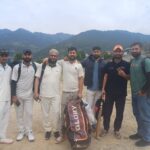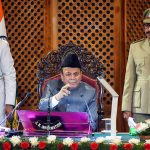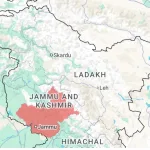Balochistan provides an apt example of how the Pakistan state has failed to accommodate the socio-cultural, political, and economic aspirations and grievances of the Baloch people, which has led to the present state of affairs. The coercive kill-and-dump policy of the army has only resulted in killings and disappearance of hundreds of innocent Baloch people, hardened nationalist sentiment among the people and steeled their nerves to continue with a popular movement that has become a thorn in the flesh of the Pakistan state. In Balochistan, human rights violations have become the norm. The Pakistan state and its security agencies have habitually trampled on the human rights of the Baloch people in the name of security and territorial integrity. The Pakistan state has been extremely sensitive to all expressions of ethnic autonomy and resistance, and more so in the case of Baloch leaders championing their rights. They are often charged with treason, branded as terrorists, and killed in encounters or picked up by security forces at will only to be added to the ever-expanding list of missing persons. In many cases, their dead bodies are either found in a badly mutilated condition by the roadside or their skeletal remains are discovered in mass graves. The Baloch have never felt safe inside Balochistan and now they do not feel safe even outside Pakistan. The case of the disappearance of Rashid Hussain Baloch from the United Arab Emirates (UAE) in December 2018, and the recent discovery of the dead body of Sajid Hussain Baloch in Sweden after he went missing in March 2020, only serves to demonstrate that the Baloch rights activists are being trailed even when they have quit Pakistan and are meeting the same fate as their ethnic cousins back home. According to Baloch forums worldwide, Pakistan’s intelligence agencies are extending their influence and operations even in distant shores, especially in countries where the Baloch diaspora is actively propounding the case of Baloch marginalization in Pakistan. Balochistan, almost the size of Germany, constitutes 44 per cent of the total area of Pakistan; however, it is sparsely populated and accounts for only 2.4 per cent of the total population of Pakistan. The Baloch see the dominance and exploitation of the resources from the province as a form of “internal colonialism.” For example, roughly 5.81 per cent of the total gas produced in Balochistan is consumed by it and the rest goes to other provinces, leaving the majority of the province without gas. According to the official data, Balochistan contributed gas and oil royalty to the tune of Rs 23.8 billion but it received only Rs 0.09 billion from the year 2013-14 to 2017-18. The Baloch fear that the activation of China-Pakistan Economic Corridor (CPEC) and development of Gwadar Port will lead to further colonisation of the state by the Punjabis. The Baloch are targeting the Chinese workers as they think that China is colluding with their tormentors to colonise them and exploit their resources. They argue that the Baloch people were not consulted when the decision to build the port was taken, and that a major part of the revenue from it will fill the coffers of the central government while the province will receive only a minor share of it. During the implementation of the CPEC project, the Baloch alleged that the locals were hardly recruited. Right from the days of partition, the people of Balochistan have resisted the Pakistan Army’s bid to subjugate them by force. As a mineral-rich area with invaluable resources ranging from copper to natural gas, Balochistan remains a prized possession for the Pakistan state, one that Pakistan has tried to keep under tight control. Beginning with the passing of a resolution for independence in the Kalat National Assembly on August 15, 1947, the aspirations of the Baloch people have oscillated between autonomy and independence. The Pakistan Army has unsuccessfully tried to silence the Baloch voice through the use of overwhelming force, while the ongoing fifth wave of resistance (earlier ones were in 1948, 1958, 1962, and 1973) continues to rage on.
Crisis in Balochistan
Sign Up For Daily Newsletter
Be keep up! Get the latest breaking news delivered straight to your inbox.
By signing up, you agree to our Terms of Use and acknowledge the data practices in our Privacy Policy. You may unsubscribe at any time.
Leave a Comment Leave a Comment
Stay Connected
Latest News
Recent Posts
- CM Omar Abdullah reaffirms social welfare as Government’s primary responsibility
- Speaker Abdul Rahim Rather reiterates PM Modi’s assurance on granting Statehood to J&K
- Danish Renzu’s film ‘Songs of Paradise’ Trailer released on Prime Video
- MeT predicts light snowfall on higher reaches, heavy rain in parts of J&K
- LG Manoj Sinha addresses Convocation of B.R. Ambedkar Bihar University







